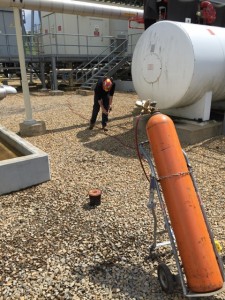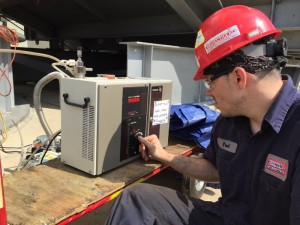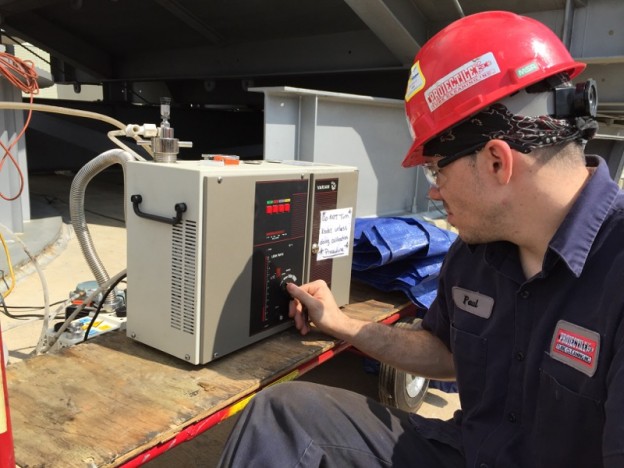Underground Pipe Testing for Leakage with Helium Mass Spectrometry
Challenge:
One of our customers contacted us in regards to finding a leak in an underground piping system. The power plant personnel knew that we could perform helium leak detection with a mass spectrometer on condenser systems, condenser tubes, and pressurized systems such as hydrogen cooled generators. The thought then was to use the same process of mass spectrometry leak detection, but on an underground piping system. The underground pipe testing would be performed like any other pressure test with helium in that the piping system would be pressurized with helium and the this would be used as a tracer gas to find area of leakage.
The pipe in question was actually a series of pipes that comprised this power plant’s compressed air system. The plant has three units that are all located outside and thus any rain water seeping into the ground could rust the air supply lines. The plant knew that the underground system was leaking because their compressor was unable to hold air pressure, but they were not exactly sure where the leak was. Thus the underground pipe testing with helium was an efficient way to find this leak without going to the extent of digging up the pipes.
Solution:
Projectile’s solution to perform the underground pipe testing was to inject helium into the plant’s air system, pressurize the 
To carry out the underground pipe testing, Projectile Technicians picked injection spots on each unit and tested the piping according to where plant personnel said that it was located underground. In this particular case, the helium rose through the ground very quickly and the technicians were able to easily find the locations of each leak. In some cases when testing for leaks in underground piping, it can take hours for the helium to rise out of the ground and thus find the location of the leak. The rate of the helium rising out of the ground is influenced by how dense the earth is above the pipe and how big the leak is. Since the helium rose very quickly and the ground was of about average density Projectile technicians asserted that the leaks were large. Throughout the test, Projectile Technicians found numerous leaks on each unit.
Results:

If you have any questions about this type of service or any of the other services we offer please feel free to contact us.

